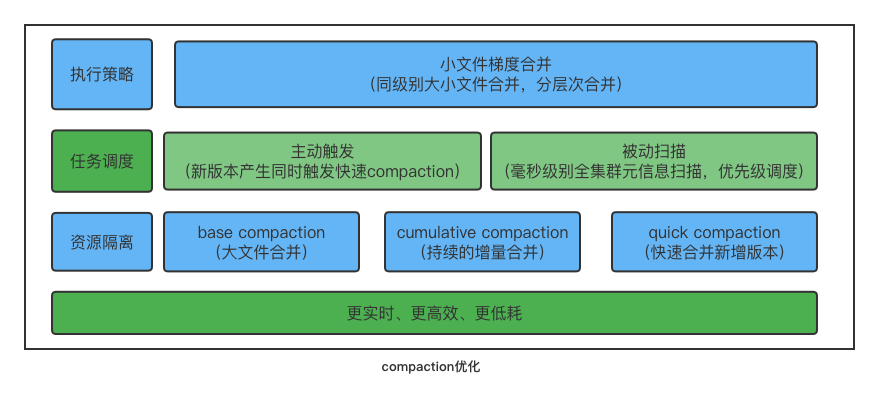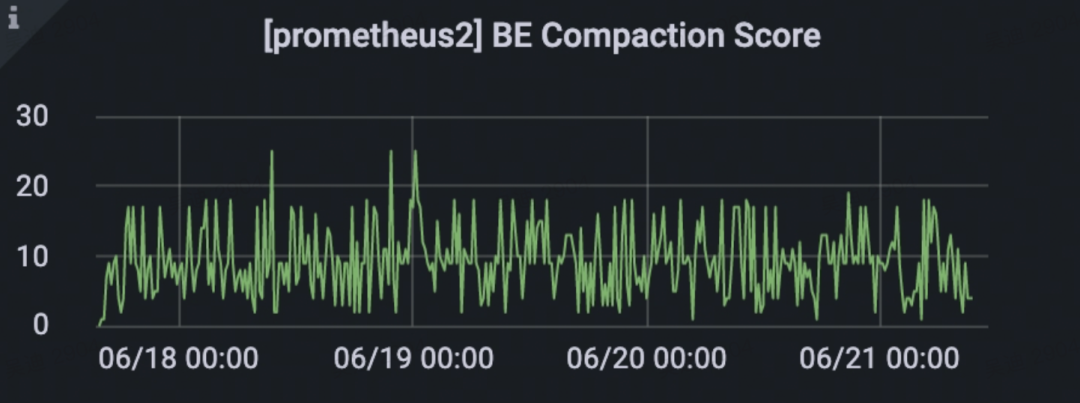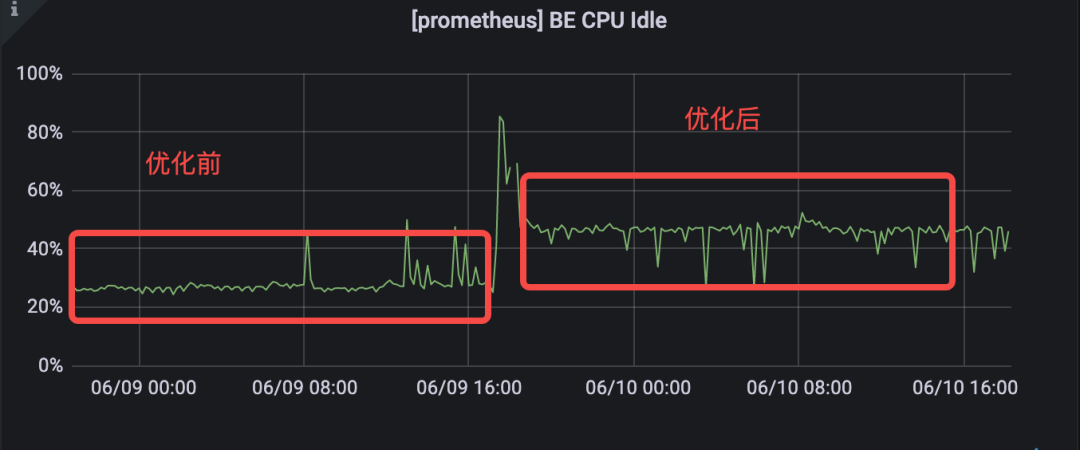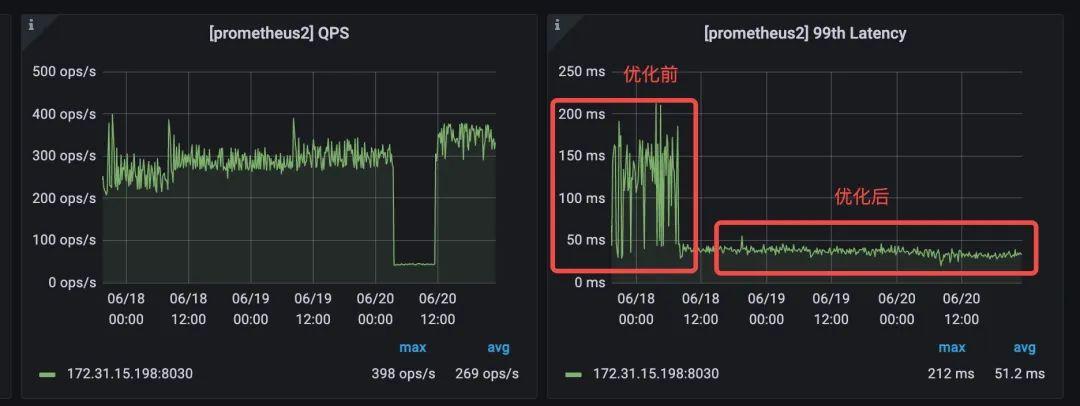This is an automated email from the ASF dual-hosted git repository.
jiafengzheng pushed a commit to branch master
in repository https://gitbox.apache.org/repos/asf/doris-website.git
The following commit(s) were added to refs/heads/master by this push:
new adaccf6be9b [blogs/docs] update 1.1.1 release note and flink
connector 2.0 blogs (#24)
adaccf6be9b is described below
commit adaccf6be9b1ae8e68f26ab502edfa8b3261e922
Author: Luzhijing <82810928+luzhij...@users.noreply.github.com>
AuthorDate: Mon Aug 1 08:45:18 2022 +0800
[blogs/docs] update 1.1.1 release note and flink connector 2.0 blogs (#24)
* update releasenote 1.1.1
---
blog/Flink-realtime-write.md | 173 +++++++++++++++++++++
docs/releasenotes/release-1.1.1.md | 19 ++-
.../Flink-realtime-write.md | 159 +++++++++++++++++++
.../current/releasenotes/release-1.1.1.md | 23 ++-
4 files changed, 370 insertions(+), 4 deletions(-)
diff --git a/blog/Flink-realtime-write.md b/blog/Flink-realtime-write.md
new file mode 100644
index 00000000000..65795f79e0a
--- /dev/null
+++ b/blog/Flink-realtime-write.md
@@ -0,0 +1,173 @@
+---
+{
+ 'title': 'How Flink's real-time writes to Apache Doris ensure both high
throughput and low latency',
+ 'summary': "With the increasing demand for real-time analysis, the
timeliness of data is becoming more and more important to the refined operation
of enterprises. With the massive data, real-time data warehouse plays an
irreplaceable role in effectively digging out valuable information, quickly
obtaining data feedback, helping companies make faster decisions and better
product iterations.",
+ 'date': '2022-07-29',
+ 'author': 'Apache Doris',
+ 'tags': ['Tech Sharing'],
+}
+---
+
+<!--
+Licensed to the Apache Software Foundation (ASF) under one
+or more contributor license agreements. See the NOTICE file
+distributed with this work for additional information
+regarding copyright ownership. The ASF licenses this file
+to you under the Apache License, Version 2.0 (the
+"License"); you may not use this file except in compliance
+with the License. You may obtain a copy of the License at
+
+ http://www.apache.org/licenses/LICENSE-2.0
+
+Unless required by applicable law or agreed to in writing,
+software distributed under the License is distributed on an
+"AS IS" BASIS, WITHOUT WARRANTIES OR CONDITIONS OF ANY
+KIND, either express or implied. See the License for the
+specific language governing permissions and limitations
+under the License.
+-->
+
+
+
+With the increasing demand for real-time analysis, the timeliness of data is
becoming more and more important to the refined operation of enterprises. With
the massive data, real-time data warehouse plays an irreplaceable role in
effectively digging out valuable information, quickly obtaining data feedback,
helping companies make faster decisions and better product iterations.
+
+In this situation, Apache Doris stands out as a real-time MPP analytic
database, which is high performance and easy to use, and supports various data
import methods. Combined with Apache Flink, users can quickly import
unstructured data from Kafka and CDC(Change Data Capture) from upstream
database like MySQL. Apache Doris also provides sub-second analytic query
capabilities, which can effectively satisfy the needs of several real-time
scenarios: multi-dimensional analysis, dashboard and [...]
+# Challange
+
+Usually, there are many challenges to ensure high end-to-end concurrency and
low latency for real-time data warehouses , such as:
+
+- How to ensure end-to-end data sync in second-level ?
+
+- How to quickly ensure data visibility ?
+
+- How to solve the problem of small files writing under high concurrency
situation?
+
+- How to ensure end-to-end Exactly-Once?
+
+Within the challenges above , we conducted an in-depth research on the
business scenarios of users using Flink and Doris to build real-time data
warehouses . After grasping the pain points of users, we made targeted
optimizations in Doris version 1.1 and greatly improved the user experience
and improved the stability. The resource consumption of Doris has also been
greatly optimized.
+
+# Optimization
+
+### Streamming Write
+
+The initial practice of Flink Doris Connector is to cache the data into the
memory batch after receiving data.The method of data writing is saving batches,
and using parameters such as `batch.size` and `batch.interval` to control the
timing of Stream Load writing at the same time.
+
+It usually runs stably when the parameters are reasonable. Whatever the
parameters are unreasonable, it would cause frequent Stream Load and compaction
untimely, resulting in excessive version errors ( -235 ). On the other hand,
when there is too much data, in order to reduce the writing frequency of Stream
Load , the setting of `batch.size` too large may also cause OOM.
+
+**To solve this problem, we introduce streaming write:**
+
+
+- After the Flink task starts, the Stream Load Http request will be
asynchronously initiated.
+
+- When the data is received, it will be continuously transmitted to Doris
through the Chunked transfer encoding of Http.
+
+- Http request will end at Checkpoint and complete the Stream Load writing .
The next Stream Load request will be asynchronously initiated at the same time.
+
+- The data will continue to be received and the follow-up process is the same
as above.
+
+The pressure on the memory of the batch is avoided since the Chunked mechanism
is used to transmit data. And the timing of writing is bound to the Checkpoint,
which makes the timing of Stream Load controllable, and provides a basis for
the following Exactly-Once semantics.
+
+### Exactly-Once
+
+Exactly-Once means that data will not be reprocessed or lost, even machine or
application failure. Flink supports the End-to-End's Exactly-Once scenario a
long time ago, mainly through the two-phase commit protocol to realize the
Exactly-Once semantics of the Sink operator.
+
+On the basis of Flink's two-stage submission, with the help of Doris 1.0's
Stream Load two-stage submission,Flink Doris Connector implements Exactly Once
semantics. The specific principles are as follows:
+
+- When the Flink task is started, it will initiate a Stream Load PreCommit
request. At this time, a transaction will be opened first, and data will be
continuously sent to Doris through the Chunked mechanism of Http.
+
+
+
+- Http request will be completed when the data writing ends at Checkpoint ,
and set the transaction status to preCommitted. The data has been written to BE
and is invisible to the user at this time.
+
+
+
+- A Commit request will be initiated after the Checkpoint, and the transaction
status will be set to Committed. The data will become visible to the user after
request.
+
+
+
+- After the Flink application ends unexpectedly and restarts from Checkpoint,
if the last transaction was in the preCommitted state, a rollback request will
be initiated and the transaction state will be set to Aborted.
+
+Based on the above , Flink Doris Connector can be used to realize real-time
data storage without loss or weight.
+
+### Second- Level Data Synchronization
+
+End-to-end second-level data sync and real-time visibility of data in high
concurrent write scenarios require Doris to have the following capabilities:
+
+- **Transaction Processing Capability**
+
+Flink real-time writing interacts with Doris in the form of Stream Load 2pc,
which requires Doris to have the corresponding transaction processing
capabilities to ensure the basic ACID characteristics, and support Flink's
second-level data sync in high concurrency scenarios.
+
+- **Rapid Aggregation Capability of Data Versions**
+
+One import in Doris will generate one data version. In a high concurrent write
scenario, an inevitable impact is that there are too many data versions, and
the amount of data imported in a single time will not be too large. The
continuous high-concurrency small file writing scenario extremely tests the
real-time ability and Doris' data merging performance, which is not friendly to
Doris, and in turn affects the performance of the query. Doris has greatly
enhanced the data compaction capa [...]
+
+First of all, in Doris 1.1 version, QuickCompaction was introduced, which can
actively triggered Compaction when the data version increased. At the same
time, by improving the ability to scan fragment meta information, fragments
that need to be compacted can be quickly discovered and trigger Compaction.
Through active triggering and passive scanning, the real-time problem of data
merging is completely solved.
+
+For high-frequency small file Cumulative Compaction, the scheduling and
isolation of Compaction tasks is implemented to prevent the heavyweight Base
Compaction from affecting the merging of new data.
+
+Finally, the strategy of merging small files is optimized by adopting gradient
merge method. Each time the files participating in the merging belong to the
same data magnitude,which can prevent versions with large differences in size
from merging, and gradually merges hierarchically, reducing the number of times
a single file is involved in merging, which can greatly save the CPU
consumption of the system.
+
+
+
+Doris version 1.1 has made targeted optimizations for scenarios such as high
concurrent import, second-level data sync, and real-time data visibility, which
greatly increases the ease of use and stability of the Flink system and Doris
system, saves the overall resources of the cluster.
+
+# Effect
+
+### General Flink High Concurrency Scenarios
+
+In the general scenario of the survey, Flink is used to synchronize
unstructured data in upstream Kafka. The data is written to Doris in real time
by the Flink Doris Connector after ETL.
+
+The customer scenario is extremely strict here. The upstream maintains a high
frequency of 10w per second, and the data needs to be able to complete the
upstream and downstream sync within 5s to achieve second-level data visibility.
Flink is configured with 20 concurrency, and the Checkpoint interval is 5s. The
performance of Doris version 1.1 is quite excellent.
+
+Specifically reflected in the following aspects:
+
+- **Compaction Real-Time**
+
+Data can be merged quickly, the number of tablet data versions is kept below
50, and the compaction score is stable. Compared with the previous -235 problem
in high concurrent import scenario, the compaction efficiency is improved more
than 10 times.
+
+
+
+- **CPU Resource Consumption**
+
+Doris version 1.1 has optimized the strategy for compaction of small files. In
high-concurrency import scenarios, CPU resource consumption is reduced by 25%.
+
+- **QPS Query Delay is Stable**
+
+By reducing the CPU usage and the number of data versions, the overall order
of data has been improved, and the delay of SQL queries will be reduced.
+
+### Second-Level Data Synchronization Scenario (Extreme High Pressure)
+
+In single bet and single tablet with 30 concurrent limit stream load pressure
test on the client side, data in real-time <1s, the comparison before and after
compaction score optimization as below:
+
+
+# Recommendations
+
+### Real-Time Data Visualization Scenario
+
+For strict latency requirements scenarios, such as second-level data
synchronization, usually mean that a single import file is small, and it is
recommended to reduce `cumulative_size_based_promotion_min_size_mbytes `. The
default unit is 64 MB, and you can set it to 8 MB manually, which can greatly
improve the compaction real-time performance.
+
+### High Concurrency Scenario
+
+For high concurrent writing scenarios, you can reduce the frequency of Stream
Load by increasing the checkpoint interval. For example, setting checkpoint to
5-10s can not only increase the throughput of Flink tasks, but also reduce the
generation of small files and avoid causing compaction more pressure.
+
+In addition, for scenarios that do not require high real-time data, such as
minute-level data sync, the checkpoint interval can be increased, such as 5-10
minutes. And the Flink Doris connector can still ensure the integrity of data
through the two-stage submission and checkpoint mechanism.
+
+# Future planning
+
+- **Real-time Schema Change**
+
+When accessing data in real time through Flink CDC, the upstream business
table will perform the schema change operation, it has to modify the schema
manually in Doris and Flink tasks. In the end, the data of the new schema can
be synchronized after restart the task .
+
+This way requires human intervention, which will bring a great operation
burden to users. In subsequent versions, real-time schema changes will support
CDC scenarios, and the upstream schema changes will be synchronized to the
downstream in real-time, which will comprehensively improve the efficiency of
schema changes.
+
+- **Doris Multi-table Writting**
+
+At present, the Doris Sink operator only supports synchronizing a single
table, so for the entire database, it still has to divide the flow manually at
the Flink level and write to multiple Doris Sinks, which will increase the
difficulty of developers. In subsequent versions, we will support a single
Doris Sink to synchronize multiple tables, which greatly simplifies the user's
operation.
+
+- **Adaptive Compaction Parameter Tuning**
+
+At present, the compaction strategy has many parameters, which can play a good
role in most general scenarios, but these strategies still can't play an
efficient role in some special scenarios. We will continue to optimize in
subsequent versions, carry out adaptive compaction tuning for different
scenarios, and keep improving data merging efficiency and real-time performance
in various scenarios.
+
+- **Single-Copy Compaction**
+
+The current compaction strategy is that each BE is carried out separately. In
subsequent versions, we will implement single-copy compaction, and realize
compaction tasks by cloning snapshots, reduce system load while reducing about
2/3 compaction tasks of the cluster, leaving more system resources to the user
side.
\ No newline at end of file
diff --git a/docs/releasenotes/release-1.1.1.md
b/docs/releasenotes/release-1.1.1.md
index b1bcc46612a..73a6c2d9769 100644
--- a/docs/releasenotes/release-1.1.1.md
+++ b/docs/releasenotes/release-1.1.1.md
@@ -58,4 +58,21 @@ One rowset multi segments in uniq key compaction, segments
rows will be merged i
### Some segment fault cases during query.
-[#10961](https://github.com/apache/doris/pull/10961)
[#10954](https://github.com/apache/doris/pull/10954)
[#10962](https://github.com/apache/doris/pull/10962)
\ No newline at end of file
+[#10961](https://github.com/apache/doris/pull/10961)
+[#10954](https://github.com/apache/doris/pull/10954)
+[#10962](https://github.com/apache/doris/pull/10962)
+
+# Thanks
+
+Thanks to everyone who has contributed to this release:
+
+```
+@jacktengg
+@mrhhsg
+@xinyiZzz
+@yixiutt
+@starocean999
+@morrySnow
+@morningman
+@HappenLee
+```
\ No newline at end of file
diff --git a/i18n/zh-CN/docusaurus-plugin-content-blog/Flink-realtime-write.md
b/i18n/zh-CN/docusaurus-plugin-content-blog/Flink-realtime-write.md
new file mode 100644
index 00000000000..734fd7703ec
--- /dev/null
+++ b/i18n/zh-CN/docusaurus-plugin-content-blog/Flink-realtime-write.md
@@ -0,0 +1,159 @@
+---
+{
+ 'title': 'Apache Doris 1.1 特性揭秘:Flink 实时写入如何兼顾高吞吐和低延时',
+ 'summary':
"随着数据实时化需求的日益增多,数据的时效性对企业的精细化运营越来越重要,使得实时数仓在这一过程中起到了不可替代的作用。本文将基于用户遇到的问题与挑战,揭秘
Apache Doris 1.1 特性,对 Flink 实时写入 Apache Doris 的优化实现与未来规划进行详细的介绍。",
+ 'date': '2022-07-29',
+ 'author': 'Apache Doris',
+ 'tags': ['技术解析'],
+}
+---
+
+<!--
+Licensed to the Apache Software Foundation (ASF) under one
+or more contributor license agreements. See the NOTICE file
+distributed with this work for additional information
+regarding copyright ownership. The ASF licenses this file
+to you under the Apache License, Version 2.0 (the
+"License"); you may not use this file except in compliance
+with the License. You may obtain a copy of the License at
+
+ http://www.apache.org/licenses/LICENSE-2.0
+
+Unless required by applicable law or agreed to in writing,
+software distributed under the License is distributed on an
+"AS IS" BASIS, WITHOUT WARRANTIES OR CONDITIONS OF ANY
+KIND, either express or implied. See the License for the
+specific language governing permissions and limitations
+under the License.
+-->
+
+
+
+# 背景
+随着数据实时化需求的日益增多,数据的时效性对企业的精细化运营越来越重要,在海量数据中,如何能实时有效的挖掘出有价值的信息,快速的获取数据反馈,协助公司更快的做出决策,更好的进行产品迭代,**实时数仓在这一过程中起到了不可替代的作用**。
+
+在这种形势下,**Apache Doris 作为一款实时 MPP 分析型数据库脱颖而出**,同时具备高性能、简单易用等特性,具有丰富的数据接入方式,结合
Flink 流式计算,可以让用户快速将 Kafka 中的非结构化数据以及 MySQL 等上游业务库中的变更数据,快速同步到 Doris 实时数仓中,同时
Doris 提供亚秒级分析查询的能力,可以有效地满足实时 OLAP、实时数据看板以及实时数据服务等场景的需求。
+
+# 挑战
+
+通常实时数仓要保证端到端高并发以及低延迟,往往面临诸多挑战,比如:
+
+- 如何保证端到端的**秒级别数据同步**?
+- 如何快速保证**数据可见性**?
+- 在高并发大压力下,如何解决**大量小文件写入**的问题?
+- 如何确保端到端的 **Exactly Once** 语义?
+
+结合这些挑战,同时对用户使用 Flink+Doris 构建实时数仓的业务场景进行深入调研,在掌握了用户使用的痛点之后,**我们在 Doris 1.1
版本中进行了针对性的优化,大幅提升实时数仓构建的用户体验,同时提升系统的稳定性,系统资源消耗也得到了大幅的优化。**
+
+# 优化
+
+## 流式写入
+Flink Doris Connector 最初的做法是在接收到数据后,缓存到内存 Batch 中,通过攒批的方式进行写入,同时使用
batch.size、batch.interval 等参数来控制 Stream Load
写入的时机。这种方式通常在参数合理的情况下可以稳定运行,一旦参数不合理导致频繁的 Stream Load,便会引发 Compaction 不及时,从而导致
version 过多的错误(-235);其次,当数据过多时,为了减少 Stream Load 的写入时机,batch.size 过大的设置还可能会引发
Flink 任务的 OOM。为了解决这个问题,**我们引入了流式写入** **:**

+
+1. Flink 任务启动后,会异步发起一个 Stream Load 的 Http 请求。
+
+2. 接收到实时数据后,通过 Http 的分块传输编码(Chunked transfer encoding)机制持续向 Doris 传输数据。
+
+3. 在 Checkpoint 时结束 Http 请求,完成本次 Stream Load 写入,同时异步发起下一次 Stream Load 的请求。
+
+4. 继续接收实时数据,后续流程同上。
+
+**由于采用 Chunked 机制传输数据,就避免了攒批对内存的压力,同时将写入的时机和 Checkpoint 绑定起来,使得 Stream Load
的时机可控,并且为下面的 Exactly-Once 语义提供了基础。**
+
+## Exactly-Once
+
+Exactly-Once 语义是指即使在机器或应用出现故障的情况下,也不会重复处理数据或者丢失数据。Flink 很早就支持 End-to-End 的
Exactly-Once 场景,主要是通过两阶段提交协议来实现 Sink 算子的 Exactly-Once 语义。在 Flink 两阶段提交的基础上,同时借助
Doris 1.0 的 Stream Load 两阶段提交,**Flink Doris Connector 实现了 Exactly Once
语义,具体原理如下:**
+
+1. Flink 任务在启动的时候,会发起一个 Stream Load 的 PreCommit 请求,此时会先开启一个事务,同时会通过 Http 的
Chunked 机制将数据持续发送到 Doris。
+
+
+
+2. 在 Checkpoint 时,结束数据写入,同时完成 Http 请求,并且将事务状态设置为预提交(PreCommitted),此时数据已经写入
BE,对用户不可见。
+
+
+
+3. Checkpoint 完成后,发起 Commit 请求,并且将事务状态设置为提交(Committed),完成后数据对用户可见。
+
+
+
+4. Flink 应用意外挂掉后,从 Checkpoint
重启时,若上次事务为预提交(PreCommitted)状态,则会发起回滚请求,并且将事务状态设置为 Aborted。
+
+**基于此,可以借助 Flink Doris Connector 实现数据实时入库时数据不丢不重。**
+
+## 秒级别数据同步
+
+高并发写入场景下的端到端秒级别数据同步以及数据的实时可见能力,**需要 Doris 具备如下几方面的能力:**
+
+**事务处理能力**
+
+Flink 实时写入以 Stream Load 2PC 的方式与 Doris 进行交互,需要 Doris 具备对应的事务处理能力,保障事务基本的 ACID
特性,在高并发场景下支撑 Flink 秒级别的数据同步。
+
+## 数据版本的快速聚合能力
+
+Doris 里面一次导入会产生一个数据版本,在高并发写入场景下必然带来的一个影响是数据版本过多,且单次导入的数据量不会太大。持续的高并发小文件写入场景对
Doris 并不友好,极其考验 Doris 数据合并的实时性以及性能,进而会影响到查询的性能。**Doris 在 1.1 中大幅增强了数据
Compaction 能力,对于新增数据能够快速完成聚合,避免分片数据中的版本过多导致的 -235 错误以及带来的查询效率问题。**
+
+**首先**,在 Doris 1.1 版本中,引入了 QuickCompaction,增加了主动触发式的 Compaction
检查,在数据版本增加的时候主动触发 Compaction。同时通过提升分片元信息扫描的能力,快速的发现数据版本多的分片,触发
Compaction。通过主动式触发加被动式扫描的方式,彻底解决数据合并的实时性问题。
+
+**同时**,针对高频的小文件 Cumulative Compaction,实现了 Compaction 任务的调度隔离,防止重量级的 Base
Compaction 对新增数据的合并造成影响。
+
+**最后**,针对小文件合并,优化了小文件合并的策略,采用梯度合并的方式,每次参与合并的文件都属于同一个数据量级,防止大小差别很大的版本进行合并,逐渐有层次的合并,减少单个文件参与合并的次数,能够大幅的节省系统的
CPU
消耗。
+
+**Doris 1.1 对高并发导入、秒级别数据同步、数据实时可见等场景都做了针对性优化,大大增加了 Flink + Doris
系统的易用性以及稳定性,节省了集群整体资源。**
+
+
+# 效果
+
+## 通用 Flink 高并发场景
+
+在调研的通用场景中,使用 Flink 同步上游 Kafka 中的非结构化数据,经过 ETL 后使用 Flink Doris Connector
将数据实时写入 Doris 中。这里客户场景极其严苛,上游维持以每秒 10w 的超高频率写入,需要数据能够在 5s
内完成上下游同步,实现秒级别的数据可见。这里 Flink 配置为 20 并发,Checkpoint 间隔 5s,Doris 1.1
的表现相当优异。**具体体现在如下几个方面:**
+
+**Compaction 实时性**
+
+数据能快速合并,Tablet 数据版本个数维持在 50 以下, Compaction Score 稳定。相比于之前高并发导入频出的 -235
问题,**Compaction 合并效率有 10+ 倍提升**。
+
+
+
+**CPU 资源消耗**
+
+Doris 1.1 针对小文件的 Compaction 进行了策略优化,在上述高并发导入场景,**CPU 资源消耗下降 25%。**

+
+**QPS 查询延迟稳定**
+
+通过降低 CPU 使用率,减少数据版本的个数,提升了数据整体有序性,从而减少了 SQL
查询的延迟。
+
+## 秒级别数据同步场景(极限大压力)
+
+单 BE 单 Tablet,客户端 30 并发极限 Stream Load 压测,数据在实时性<1s,Compaction Score 优化前后对比
+
+
+
+# 使用建议
+
+## 数据实时可见场景
+
+对延迟要求特别严格的场景,比如秒级别数据同步,通常意味着单次导入文件较小,此时建议调小
cumulative_size_based_promotion_min_size_mbytes,单位是 MB,默认 64,可以设置成 8,能够很大程度提升
Compaction 的实时性。
+
+## 高并发场景
+
+对于高并发的写入场景,可以通过增加 Checkpoint 的间隔来减少 Stream Load 的频率,比如 Checkpoint 可以设置为
5-10s,不仅可以增加 Flink 任务的吞吐,也可以减少小文件的产生,避免给 Compaction 造成更多压力。
+
+此外,对数据实时性要求不高的场景,比如分钟级别的数据同步,可以增加 Checkpoint 的间隔,比如 5-10 分钟,此时 Flink Doris
Connector 依然能够通过两阶段提交 +checkpoint 机制来保证数据的完整性。
+
+# 未来规划
+
+**实时 Schema Change**
+
+目前通过 Flink CDC 实时接入数据时,当上游业务表进行 Schema Change 操作时,必须先手动修改 Doris 中的 Schema 和
Flink 任务中的 Schema,最后再重启任务,新的 Schema
的数据才可以同步过来。这样使用方式需要人为的介入,会给用户带来极大的运维负担。**后续会针对 CDC 场景做到支持 Schema 实时变更,上游的
Schema Change 实时同步到下游,全面提升 Schema Change 的效率。**
+
+**Doris 多表写入**
+
+目前 Doris Sink 算子仅支持同步单张表,所以对于整库同步的操作,需要手动在 Flink 层面进行分流,写到多个 Doris Sink
中,这无疑增加了开发者的难度,**在后续版本中我们也将支持单个 Doris Sink 同步多张表,这样就大大的简化了用户的操作。**
+
+**自适应的 Compaction 参数调优**
+
+目前 Compaction
策略参数较多,在大部分通用场景能发挥较好的效果,但是在一些特殊场景下并不能高效的发挥作用。**我们将在后续版本中持续优化,针对不同的场景,进行自适应的
Compaction 调优,在各类场景下提高数据合并效率,提升实时性。**
+
+**单副本 Compaction**
+
+目前的 Compaction 策略是各 BE 单独进行,**在后续版本中我们将实现单副本 Compaction,通过克隆快照的方式实现 Compaction
任务,减少集群 2/3 的 Compaction 任务,降低系统的负载,把更多的系统资源留给用户侧。**
+
diff --git
a/i18n/zh-CN/docusaurus-plugin-content-docs/current/releasenotes/release-1.1.1.md
b/i18n/zh-CN/docusaurus-plugin-content-docs/current/releasenotes/release-1.1.1.md
index e69f6ab193a..d6618567518 100644
---
a/i18n/zh-CN/docusaurus-plugin-content-docs/current/releasenotes/release-1.1.1.md
+++
b/i18n/zh-CN/docusaurus-plugin-content-docs/current/releasenotes/release-1.1.1.md
@@ -55,10 +55,27 @@ MemTracker 是一个用于分析内存使用情况的统计工具,在 1.1.0
目前,向量化执行引擎不能处理所有的 SQL 查询,一些查询(如 left outer join)将使用非向量化引擎来运行。但部分场景在 1.1.0
版本中未被覆盖到,这可能导致 BE 挂掉。
-### Compaction 不能正常工作,导致 -235 错误。
+### 修复 Compaction 不能正常工作导致的 -235 错误。
在 Unique Key 模型中,当一个 Rowset 有多个 Segment 时,在做 Compaction
过程中由于没有正确的统计行数,会导致Compaction 失败并且产生 Tablet 版本过多而导致的 -235 错误。
-### 在查询过程中出现了一些分段故障。
+### 修复查询过程中出现的部分 Segment fault。
-[#10961](https://github.com/apache/doris/pull/10961)
[#10954](https://github.com/apache/doris/pull/10954)
[#10962](https://github.com/apache/doris/pull/10962)
+[#10961](https://github.com/apache/doris/pull/10961)
+[#10954](https://github.com/apache/doris/pull/10954)
+[#10962](https://github.com/apache/doris/pull/10962)
+
+# 致谢
+
+感谢所有参与贡献 1.1.1 版本的开发者:
+
+```
+@jacktengg
+@mrhhsg
+@xinyiZzz
+@yixiutt
+@starocean999
+@morrySnow
+@morningman
+@HappenLee
+```
\ No newline at end of file
---------------------------------------------------------------------
To unsubscribe, e-mail: commits-unsubscr...@doris.apache.org
For additional commands, e-mail: commits-h...@doris.apache.org
